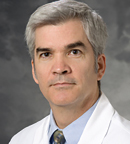Use of human papillomavirus (HPV) vaccines should be rapidly expanded to protect thousands of young people in the United States—and millions worldwide—from life-threatening cancers, ASCO said April 11 in a policy statement. Published by Bailey et al in the Journal of Clinical Oncology,1 the statement outlines current barriers to HPV vaccination and recommendations to promote the uptake of these vaccines, which have the potential to save millions of lives.
Vaccine Background
HPV is usually passed from person to person during direct skin-to-skin contact and is the most common sexually transmitted disease in the United States. There are more than 150 different types of HPV, many of which can cause cancer. The most prevalent is cervical cancer, which HPV infection is the cause of in almost every case. HPV can also cause oral cancer and is associated with anal, vulvar, and vaginal cancers in women, and penile cancer in men.
The U.S. Food and Drug Administration first approved HPV vaccines in 2006, and they have demonstrated excellent efficacy and safety in long-term studies and follow-up. This prompted the Centers for Disease Control and Prevention (CDC) to recommend in 2014 that all boys and girls between the ages of 11 and 12 years old be vaccinated. For adults, vaccines are recommended for males through age 21 and females through age 26. The CDC also recommends vaccination for gay and bisexual men through age 26, and for men and women with compromised immune systems through age 26 if they did not get fully vaccinated at a younger age.

With safe and effective vaccines readily available, no young person today should have to face the devastating diagnosis of a preventable cancer.— Julie M. Vose, MD, MBA, FASCO
Tweet this quote
“With safe and effective vaccines readily available, no young person today should have to face the devastating diagnosis of a preventable cancer like cervical cancer. But unless we rapidly increase vaccination rates for boys and girls, many of them will,” said ASCO President Julie M. Vose, MD, MBA, FASCO. “As oncologists, we see the terrible effects of these cancers first hand, and we have to contribute to improving today’s alarmingly low vaccination rates.”
Low Rates of Vaccination
The 2011 National Immunization Survey2 found that only about 36% of girls and 14% of boys have received the full schedule of HPV vaccines needed to provide protection. Also, in a study published by Kish et al in the Journal of Global Oncology,3 researchers analyzed data from the North American Association of Central Cancer Registries and found that a 40-year decline in cervical cancer rates in the United States has slowed. The study notes that some states with the highest incidence of cervical cancer have low rates of HPV vaccine uptake.
ASCO supports the recommendation to markedly increase the proportion of young boys and girls receiving the HPV vaccine in the United States and worldwide because research has shown that it is most effective in preventing cancer. The Society also makes recommendations in the following areas to increase the use of the vaccine.
Education and awareness among health-care professionals, policymakers, patients, and the public, including ways to improve delivery in doctor’s offices with the use of electronic health record systems
Coverage and access for routine vaccination, including consideration of school-based HPV vaccination programs, which have been successful in other countries
Addressing critical knowledge gaps through research on effective ways of increasing routine vaccine use
ASCO also believes oncologists can play a vital role in increasing the uptake of HPV vaccines. While most oncologists will not be the direct health-care providers of these preventive measures, they still play a very important role in the process through research and advocacy. ASCO encourages oncologists to advocate for and actively promote policy change to increase the use of the vaccination.

We need to use our interactions with our patients, primary care colleagues, and health-care systems to raise awareness of HPV-related cancers and the critical role of vaccination in preventing them.— Howard H. Bailey, MD
Tweet this quote
“Oncologists have a professional obligation to help reduce the burden of cancer on patients, their families, and our communities,” said Howard H. Bailey, MD, Immediate Past Chair of ASCO’s Cancer Prevention Committee and Chair of the task force that developed the policy statement. “We need to use our interactions with our patients, primary care colleagues, and health-care systems to raise awareness of HPV-related cancers and the critical role of vaccination in preventing them.”
In addition to the statement, ASCO will publish a guideline later this year on cervical cancer prevention in primary care that also addresses HPV vaccination. ■
References

